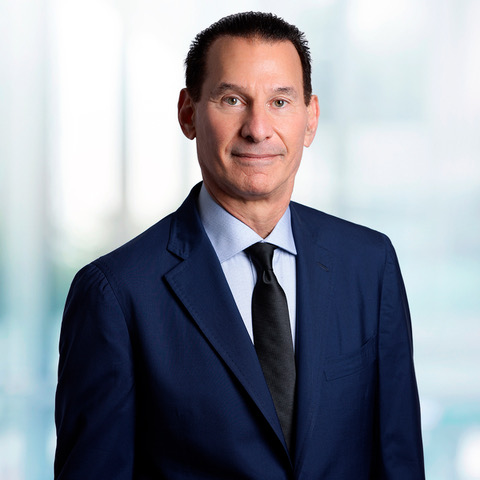
Dr. Alan Baratz’s career picked up momentum when he became the first president of JavaSoft at Sun Microsystems. He oversaw the growth and adoption of the Java platform from its infancy to a robust platform supporting mission-critical applications in nearly 80 percent of Fortune 1000 companies. It was that vast experience, amoung many, that brightly lit the path for Alan’s next role with D-Wave.
First, as D-Wave’s Executive Vice President of R&D, Alan was the driving force behind behind the development, delivery, and support of all of D-Wave’s products, technologies, and applications. Now, spending the last three years as D-Wave’s CEO, Alan is building his expertise to hit a new stride and take his organization to the next level.
M.R. Rangaswami : Can you provide an overview of D-Wave’s technology and the state of the quantum computing market today?
Dr. Alan Baratz: It’s an incredibly exciting time in the quantum computing market, as we’re starting to see companies and governments around the world increasing both interest and investment in the
technology. In fact, a study from Hyperion Research found that more than 80% of responding companies plan to increase quantum commitments in the next 2-3 years and one-third of those will spend more than $15 million annually on quantum computing efforts.
The accelerated adoption of quantum computing comes at a time when businesses are facing difficult economic headwinds and are looking for solutions that help reduce costs, drive revenue and fuel operational effectiveness. Quantum’s power and potential to tackle computationally complex problems make it an important part of any modern enterprise’s tech stack.
And the market potential is significant. According to Boston Consulting Group, quantum computing will create a total addressable market (TAM) of between $450–$850 billion in the next 15 to 30 years, reaching up to $5B in the next three to five years. Many problems, especially those relating to optimization, can be solved with today’s systems.
There are two primary approaches to quantum computing – quantum annealing and gate
model. While you may have heard that quantum computing won’t be ready for years, that longer timeline refers only to gate model.
The reality is that practical quantum solutions, those that use quantum annealing systems, are already in market now, helping organizations solve some of their biggest challenges.
D-Wave customers are using our Leap TM quantum cloud service to gain real-time access to our
quantum computers and hybrid solvers to tackle some of their most complex optimization
problems. We offer a full-stack quantum solution – hardware, software and professional
services – to give customers support throughout their quantum journey. And given our QCaaS
(quantum computing-as-a-service) approach, we make it very easy for the enterprise to
incorporate the technology into their compute infrastructure.
M.R.: What are some examples of commercial applications you’re seeing?
Alan: Optimization is an enterprise-wide challenge that businesses of all kinds face – whether they’re in financial services, manufacturing, logistics, life sciences, retail or more. Many common yet computationally challenging problems like employee scheduling, offer allocation, e-commerce delivery, cargo logistics, and supply chain distribution can all be represented as optimization problems, and thus solved by today’s quantum annealing technology. These problems are made more difficult by the vast amount of data generated daily, which can quickly translate into critical pain points that impact a business’ bottom line.
We’re seeing organizations increasingly turning to quantum-hybrid applications to address these optimization challenges. For example, the nation’s largest facility for handling shipborne cargo used D Wave technology to optimize port operations, resulting in a 60% increase in crane deliveries and a 12% reduction in turnaround time for trucks.
A major credit card provider is using quantum-hybrid applications to optimize offer allocations for its customer loyalty and rewards program to increase cardholder satisfaction while maximizing campaign ROIs. And a defense company created a quantum-hybrid application for missile defense that was able to consider 67 million different scenarios to find a solution in approximately 13 seconds.
The commercial value is apparent, and if you’re not currently exploring quantum in your enterprise, I believe you’re already behind.
M.R.: What’s next for quantum computing?
Alan: The pace of innovation and progress in quantum computing is remarkable. From a commercial exploration and adoption perspective, I believe we’re going to see a major uptick in the near term, as more organizations recognize the technology’s potential and increase investments. Quantum has moved out of the lab and into the boardroom.
It’s no longer just relegated to the R&D teams to play with, but rather has captured the attention of business decisionmakers faced with increasingly challenging and complex problems that require faster time-to-solution. With the increased adoption will come rapid development of proofs-of-concept and ultimately production applications that will help streamline daily enterprise operations.
From a scientific view, I expect major developments on the horizon as quantum annealing technology further scales and reaches even higher qubit counts and coherence times. Gate-model development will continue to progress, as the industry hopes to eventually find a path toward low-noise systems that can actually solve problems. Lastly, we all will continue our efforts to demonstrate quantum’s advantage over classical compute for intractable problems.
We’re already seeing positive signs at D-Wave, as recent research findings contribute to a
growing body of research that may lead us to the first practical quantum supremacy result.
